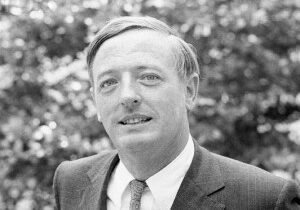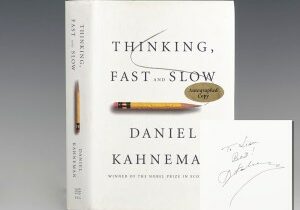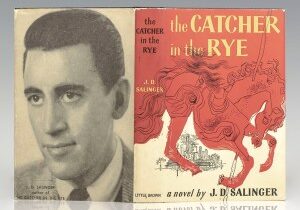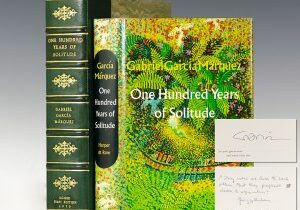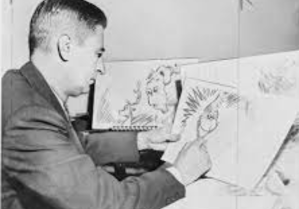
Perhaps best known for the development of his mass–energy equivalence formula, E = mc2, German born theoretical physicist, Albert Einstein’s surname has practically become synonymous with the term ‘genius’ in modern popular culture. Einstein received the Nobel Peace Prize in 1921 for his “services to theoretical physics” which included his development of the general theory of relativity and contributions to the development of quantum theory, the two pillars of modern physics.
Einstein’s first published scientific works appeared in 1900 and he received his PhD from the University of Zurich in 1905. His career in academics skyrocketed and he was soon recognized as one of the world’s leading scientists. After his award of the Nobel Peace Prize in 1921, Einstein traveled abroad on a series of lecture tours which drew considerable crowds and brought him to Asia, Palestine, and the United States.
On a visit to the U.S. in 1933, Einstein discovered that the new German government had passed laws barring Jews from holding any official positions, including teaching at universities. Einstein was forced to flee Germany and his works were among those targeted by the German Student Union in the Nazi book burnings. Einstein soon took an active role in the effort to bring Jewish scientists out of Germany and place them in teaching positions abroad with the enthusiastic support of Winston Churchill.

First Edition of the Evolution of Physics; Inscribed by Albert Einstein to the book’s editor, Heinz Norden, in the year of publication. Trade editions signed by Einstein are uncommon.
One of the scientists Einstein attempted to help in this effort was personal friend Leopold Infeld. When he was not able to secure a position for Infeld in the U.S., Einstein agreed to co-write The Evolution of Physics with him. Intended as a science book for the layperson, the book was a great commercial success and was featured in a Time Magazine cover story upon its publication in 1938.
Einstein remained in the United States and, in 1939, was approached by a group of Hungarian scientists who had recently attempted to warn the U.S. government about ongoing Nazi atomic research, but had been dismissed. Einstein agreed to give his support in writing a letter to President Roosevelt warning him of the risk of allowing Hitler to develop the bomb first. The letter and his later meetings with President Roosevelt ultimately resulted in United States’ development of the atomic bomb. Einstein later expressed to a friend that writing that letter was the greatest mistake of his life.

First Edition of Out of My Later Years, Signed by Albert Einstein; offering an intimate look into Einstein’s views and convictions as a scientist, philosopher, and humanitarian.
Throughout his career, Einstein published hundreds of books and articles and over 300 scientific papers. Later in his life, his writing began to focus on his philosophies regarding more humanitarian issues, moving away from strict scientific theory. Published in 1950, Out Of My Later Years was comprised of a collection of philosophical essays in which Einstein spoke on a variety of moral, political, social, and religious issues. Our collection currently includes the items featured above as well as a rare first edition of Albert Einstein: A Biographical Portrait inscribed by Einstein in 1931 with a unique four-line poem; a Signed Limited Edition of Albert Einstein: Philosopher-Scientist; and a Silver Gelatin Print of Einstein signed by him in 1952.

